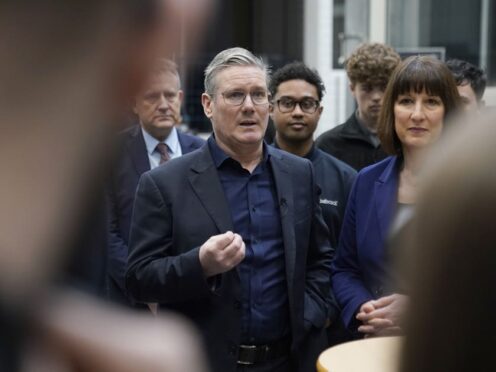
Labour has rejected “dodgy” analysis of its plan to introduce a windfall tax on the excess profits of oil and gas giants, which suggests the policy would raise far less for its green projects than the party estimates.
The costings on Labour’s oil and gas levy, published on the Government website on Saturday, was immediately dismissed by the party.
Labour pointed to a note on the Treasury document stating the costings were completed in January and that “since then further announcements have been made by the Labour Party, which would impact the costs of this policy”.
The document also says: “The nature of this costing is uncertain and is driven by assumptions provided by special advisers”.
The opposition party said the analysis, carried out by HM Revenue and Customs, “fundamentally misunderstands our policy”.
Sir Keir Starmer this week dropped the flagship pledge to spend £28 billion a year on environmental projects in a major U-turn, with the party now set to spend £23.7 billion over the course of the next parliament.
As part of the announcement, the Labour leader promised a “proper” windfall tax on oil and gas companies, which he said would raise £10.8 billion over five years to help pay for the green spending plans.
The plans include the extension of the tax until 2029, with the energy profits levy rising to 78%.
But the Treasury costing suggests revenue to the Exchequer over five years would only amount to £2.8 billion, leaving a black hole of £8 billion.
Labour noted that the Government costings assume the first-year capital allowance within the energy profits levy is retained, although Sir Keir’s party wants to scrap both that and the investment allowance.
The costing therefore only accounts for £10 out of every £45 of the allowances Labour would abolish, it said.
The document also wrongly assumes the levy would end in 2028, and that Labour would backdate the tax to the start of 2022, although Sir Keir axed that plan.
Earlier this week, Labour also dismissed as “bogus” analysis of its proposal to improve energy efficiency across millions of homes, which found it would cost taxpayers around £12 to 15 billion a year.
Chancellor Jeremy Hunt later appeared to acknowledge the cost of the Labour policy may not be as high as estimated by officials, telling ITV News that “even if it’s not double the £6 billion, it is still a very big chunk of a £28 billion spending spree”.
A Labour spokesperson said: “Once again the Conservatives have costed somebody’s policy, but it is not Labour’s.
“This is yet another nonsense costing that fundamentally misunderstands the details of our policy.
“Tory advisers’ time would be better spent teaching Jeremy Hunt’s number two how to count than issuing any more of these dodgy dossiers.”
A Government spokesperson said: “The costing of opposition policies is a long-standing exercise governed by a set of guidelines in place over successive governments.”

Enjoy the convenience of having The Sunday Post delivered as a digital ePaper straight to your smartphone, tablet or computer.
Subscribe for only £5.49 a month and enjoy all the benefits of the printed paper as a digital replica.
Subscribe